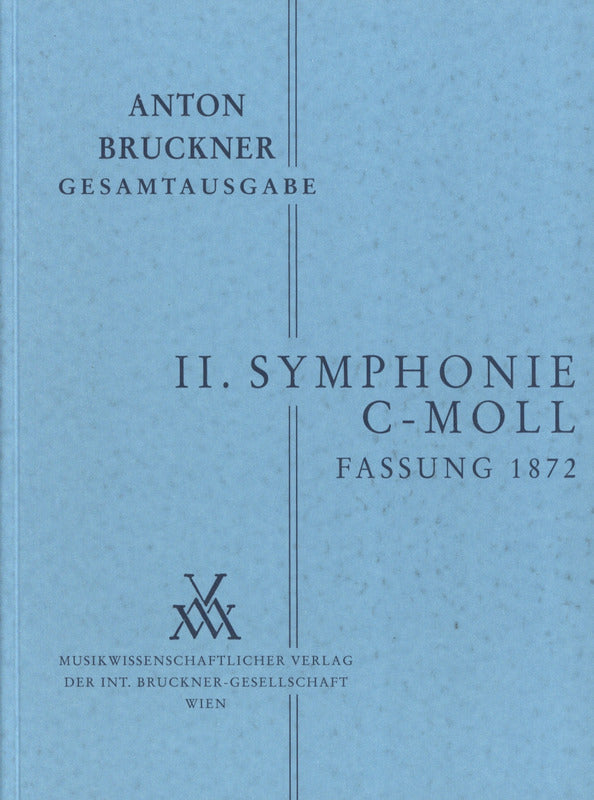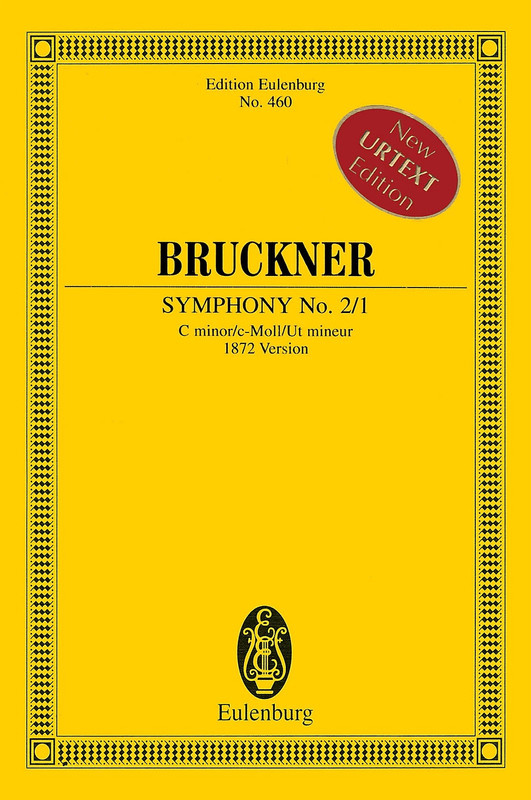Bruckner: Symphony 2
Symphony no. 2 in C minor, the 'Symphony of Pauses', makes a leap forward in a few ways for Bruckner.
First comes the length and girth. Whereas the first couple of symphonies from Bruckner have stuck to the 40 - 45 minute range, this one touches between 55 - 60 minutes with outliers on both sides of those times. I daresay, Bruckner fills up the extra time well too.
Next come the pregnant pauses. Some rests are determinedly full of expectant silence while others come and go rather metrically. It is an interesting way to either create musical expectation and intent or to divide the music structurally.
There are a fair number of editions of Symphony no. 2 compared to the earlier symphonies as well. The two versions come from Bruckner's first attempt in 1872 as well as a second in 1877, some of which included large amounts of cuts. Both Haas and Nowak made their own editions based on the 1877 version, while Carragan has made editions based on both versions. Most performances come in the form of the second version, although conductors have generally chosen which elements they like from both the Haas and Nowak editions. This smorgasbord approach can make recordings very different from one another.
On to the symphony:
The first movement contains a strong trio of expository themes. I believe the first melodic idea to be the finest to explore the titled key of C minor; it is chromatic, thus somewhat menacing and full of portent, similar to that created by Antonín Dvořák in the opening of his Requiem. Unlike Bruckner's Symphony no. 1, also set in C minor, Bruckner doesn't seem as interested in dwelling upon the minor key, although this opening theme not only returns later on in the first movement, but also reappears in the last movement as well, so its importance must not be understated.
The second exposition motive is of a Romantic lyrical quality, one which winsomely leaps about, especially when the strings really get to romance it up full bow. Also, as in his previous symphony, Bruckner mixes rhythms across the orchestra, with straight quavers playing against dotted ones, not to mention a quirky dotted triplet figure given to the trumpets throughout. The third theme features a chugging motion in the bass line, an easy way to identify its appearance.
Of course, these disparate elements within the opening movement are all repeated, juxtaposed, layered so as to give the listener a full symphonic experience.
A hymn-like idea opens the second movement, although it is made of more pastoral material than anything pious, I think. This portion of the symphony is the one which many conductors cut, for it is a rather long affair. Thus, timings will vary greatly from recording to recording.
About a quarter of the way through the Adagio, the strings begin plucking, beginning a sort-of Neo-Renaissance section which I absolutely adore. The harmonic motion is so unexpected here, and Bruckner moves around the tessitura of the instruments playing it.
Personally, I prefer when the second movement ends with a horn solo rather than a clarinet solo in the revision. Whoever the whinging horn player was in Bruckner's time should be ashamed of himself, for now we are stuck with recordings of a less effective ending
Since I am no lover of late-Romanticism, when I can be captivated by certain moments in lengthy slow movements, I know I am in continually good hands.
I am not as enamored with the third-movement Scherzo as compared to Bruckner's First Symphony. This was is a fair bit lighter in quality, although there is the same sense of dread hanging over its music. I will say there are some orchestrating ideas which make this one more symphonic sounding, however. The Trio is also contrasted a bit differently too, here differentiated more in content rather than through tempo.
A gentle Austrian pastoral scene starts the final movement before wandering back into the C minor title key. It takes a while to get there too, thus my earlier statement of Bruckner not being so concerned regarding the journey of the title key. That, and the composer has to wend back amongst previous movement's musical ideas before really getting down to business.
Of older recording, I like Horst Stein with Vienna, Eugen Jochum with the Bavarians, and Karajan in this symphony. More recently, Skrowaczewski and Eschenbach are interesting voices in Bruckner.
1973: Stein
1974: Giulini
1981: Karajan
1991: Solti
1996: Eschenbach
1999: Skrowaczewski
For
now, we will have a
very basic list of Bruckner reviews above. Those recordings I mentioned
as an example in the text above, or performances I have come to respect
which await future reviews, are listed above in greened bold. My actual reviews can be found in the typical Oozy Keep orange. Until we at The Oozy Channel Keep
have gotten ourselves up and running, this should suffice and we can
reorganize the page a little more coherently in the future.

